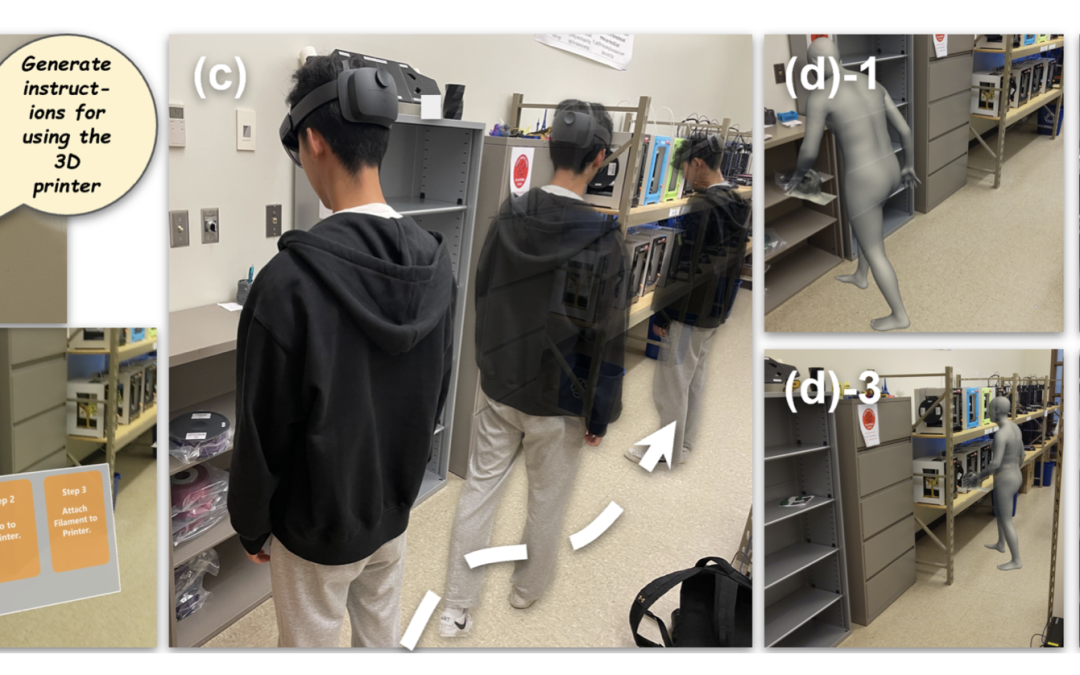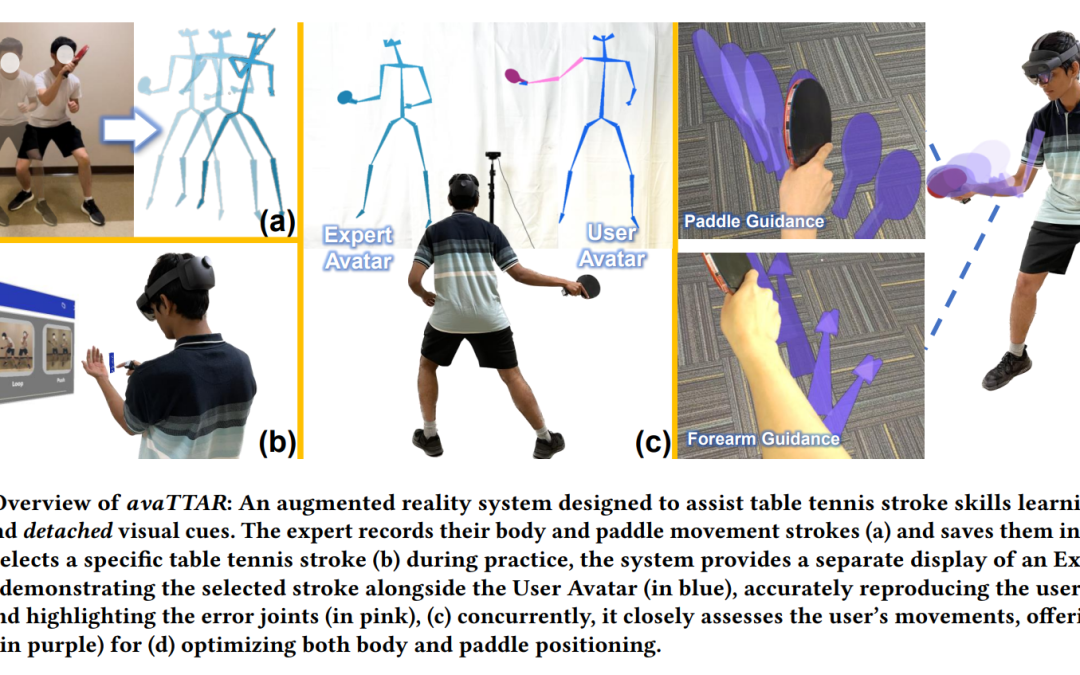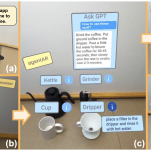
by Chenfei Zhu | Sep 30, 2025 | 2025, Chenfei Zhu, Featured Publications, Jingyu Shi, Karthik Ramani, Recent Publications, Shao-Kang Hsia, Xiyun Hu, Ziyi Liu
Creating Augmented Reality (AR) applications requires expertise in both design and implementation, posing significant barriers to entry for non-expert users. While existing methods reduce some of this burden, they often fall short in flexibility or usability for...

by Karthik Ramani | Apr 25, 2025 | 2025, Jingyu Shi, Karthik Ramani, Rahul Jain
Extended Reality (XR)-enabled headsets that overlay digital content onto the physical world, are gradually finding their way into our daily life. This integration raises significant concerns about privacy and access control, especially in shared spaces where XR...

by Rahul Jain | Apr 25, 2025 | 2025, Augmented Reality, Featured Publications, Hyunggun Chi, Hyungjun Doh, Jingyu Shi, Karthik Ramani, Rahul Jain, Recent Publications, Seunggeun Chi
Context-aware AR instruction enables adaptive and in-situ learning experiences. However, hardware limitations and expertise requirements constrain the creation of such instructions. With recent developments in Generative Artificial Intelligence (Gen-AI), current...

by Karthik Ramani | Apr 14, 2025 | 2025, Jingyu Shi, Karthik Ramani, Min Liu, Runlin Duan, Xiyun Hu
Parametric modeling software is a powerful design tool for defining complex geometries, controlling precise dimensions, and maintaining design intent during iterative modifications. However, such software challenges novice users due to the complex user interfaces,...

by Rahul Jain | Feb 24, 2025 | 2025, Augmented Reality, Featured Publications, Hyungjun Doh, Jingyu Shi, Karthik Ramani, Rahul Jain, Recent Publications, Subramanian Chidambaram
Mixed Reality (MR) is gaining prominence in manual task skill learning due to its in-situ, embodied, and immersive experience. To teach manual tasks, current methodologies break the task into hierarchies (tasks into subtasks) and visualize not only the current...

by Dizhi Ma | Sep 16, 2024 | 2024, Dizhi Ma, Featured Publications, Jingyu Shi, Karthik Ramani, Karthik Ramani, Rahul Jain, Recent Publications, Xiyun Hu, Zhengzhe Zhu, Ziyi Liu
Table tennis stroke training is a critical aspect of player development. We designed a new augmented reality (AR) system, avaTTAR, for table tennis stroke training. The system provides both “on-body” (first-person view) and “detached”...










